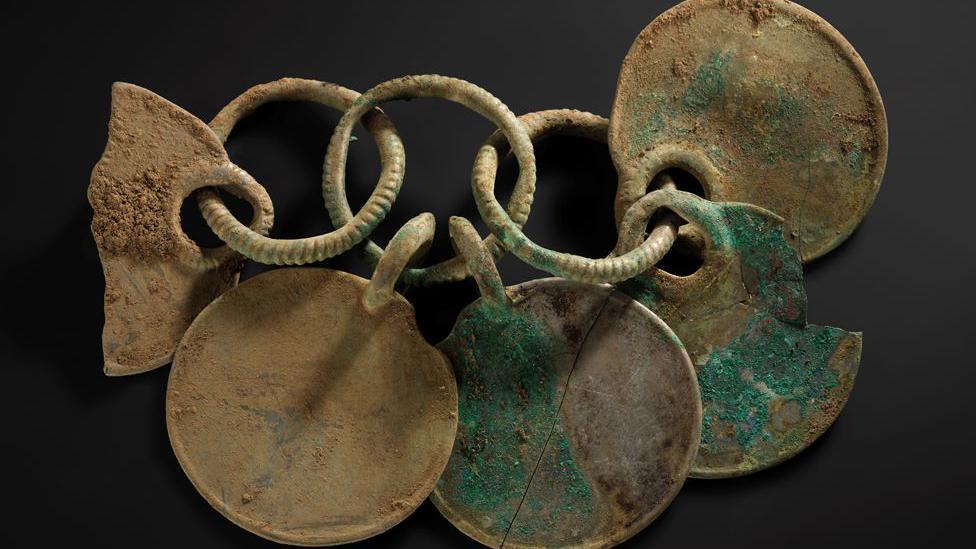
NMS said some of the items showed Scotland’s links to a wider network of communities across the North Sea
Giancarlo Rinaldi
South Scotland reporter
A hoard of Bronze Age artefacts unearthed by a metal detectorist in the Borders has been saved for the nation by National Museums Scotland.
It has acquired the Peebles Hoard, which had lain undisturbed for 3,000 years before it was was discovered in 2020.
Efforts have now started to secure funding for continued research and conservation of the collection, which includes more than 500 pieces.
National Museums Scotland (NMS) senior curator Dr Matthew Knight said it shed new light on Bronze Age communities in Scotland.
Image source, Crown Copyright
Hundreds of pieces were discovered by a metal detectorist in 2020
The hoard has been described as one of the most significant ever found in Scotland.
Dating from between 1,000BC and 800BC it was allocated to NMS under the Treasure Trove system with an ex gratia payment made to the detectorist.
NMS said it represented a “complex set of material, some of which has no archaeological parallel anywhere in western Europe”.
“This includes many unique artefacts, the use of which is yet to be discovered and could transform our understanding of life in Bronze Age Scotland,” it added.
Image source, Neil Hanna
The unique hoard unearthed in the Borders gives new insight to Scotland’s past
However, it said some of the larger artefacts highlighted Scotland’s position as part of an international network of communities across the North Sea.
“Two rattle pendants, the first ever found in Scotland, are more commonly found in Denmark, northern Germany and northern Poland,” it said.
“These remarkable objects are created from interlinked bronze rings and pendant plates that would have hung from a horse or wooden vehicle and rattled as they moved.”
Other items include a sword still in its wooden scabbard, as well as an array of small bronze buttons looped onto cords.
Image source, University of Southampton
A CT scan was used to establish what was contained in the hoard
The hoard was found in 2020 by metal-detectorist Mariusz Stepien, who alerted the Treasure Trove Unit.
That allowed experts to coordinate a complex retrieval process which involved removing the hoard from the ground in a single block which was then CT scanned.
Professor Ian Sinclair, founder of the µ-VIS X-ray Imaging Centre at the University of Southampton, said it was “pleased and excited” to have been involved.
“CT scanning the hoard was certainly a big challenge due to the scale of the hoard block,” he said.
“But we relished the opportunity to bring our engineering skills to successfully support this research on such an exceptional historical find.”
Dr Knight said the complex work had proved worthwhile.
“The Peebles Hoard is exceptional, an utterly unique discovery that rewrites our understanding of both Bronze Age communities in Scotland and our prehistoric international connections,” he said.
A fundraising campaign has now started in order to preserve the hoard and unlock its “enormous research potential”.










